Reactions to tank color vary with the species and life stage
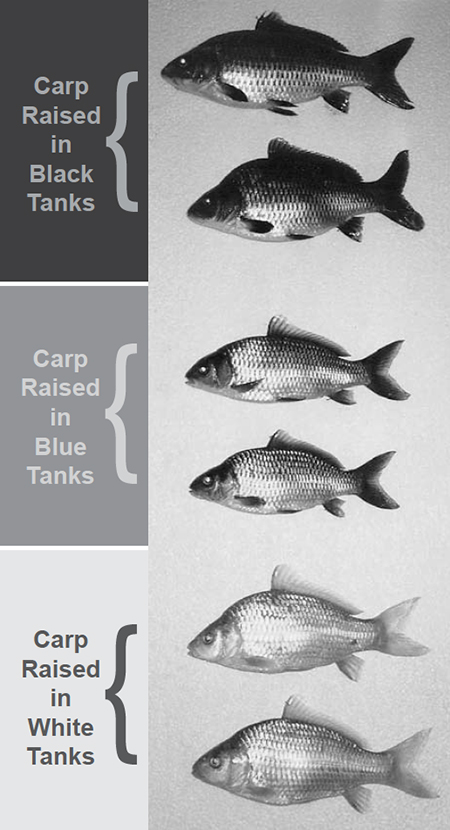
In aquaculture ponds and net pen systems, growth rates of fish are related to a variety of factors, such as stocking density, nutrition, water quality, and health. In the case of indoor recirculating water systems, producers attempt to maximize productivity by optimizing the above parameters, as well as other aspects of the environment. Several studies now suggest the color of indoor tanks should also be considered for improved animal health and performance in indoor systems.
Tank color and environment
The color of the environment surrounding aquatic animals raised indoors is a function of illumination (intensity, spectrum and photoperiod) and the inside color of the tank. Some fish species modify their skin color in response to background color and other factors. For example, a naturally dark-colored fish can quickly (within few days or even less) turn to a lighter color in a white tank.
Color adaptation depends on specific neural and hormonal processes related, for example, to defense mechanisms, reproduction, interanimal behavior, and others. The color change is implemented through neuro-endocrine control of dispersion and aggregation of fish pigments, as well as hormonal control of the number of chromatophores and amount of pigments.
Given the neural and hormonal responses elicited by background colors, it seems clear that tank color can affect fish behavior and physiology. The magnitude of the effect is thought to be related to the difference between the specific color of a tank and the natural coloration of the particular species considering its age, size, and physiological stage.
Hormones and color changes
Catecholamines and corticosteroids, as well as other hormones (including melanocyte-stimulating hormone, melanin-concentrating hormone, and melatonin) are involved in fish color modification. Circulating levels of catecholamines and corticosteroids are common indicators of stress response in fish. Consequently, an improper tank color might be considered a stressful condition to fish during culture.
Fish stress can be classified as acute (sudden and short-term) or chronic (moderate and continuous). Growth suppression is mainly associated with chronic stress, while immune suppression can be associated with either acute or chronic stress.
Reactions to tank color
Studies have shown that reactions to tank color vary with the species and life stage. For example, grey- to green-colored tanks have been reported to yield best results for smoltification. No clear consensus exists about the optimum color for larval-rearing tanks, despite several studies that monitored larval growth, survival, and swim bladder development.
This may be due to confounding effects caused by use of different species, densities, feed types and densities, photoperiods, and light intensities. Larvae of some species seem to prefer white or light gray. Others like black-colored tanks, while still others prefer a “green water” environment for locating food and/or maximizing swim bladder inflation.
The juvenile and ongrowing stages are the most susceptible to stress from unsuitable background colors. Of course, mortality and growth rate are the primary evaluation criteria. Secondary criteria are stress indicators (cortisol, glucose, osmolality, electrolytes, pH, gases, enzymes, etc.) that can be measured using blood tests.
Species studied
So far, all teleost species studied (Anguilla anguilla, Salmo trutta, Pleuronectes americanus, Oncorhynchus mykiss, Sarotherodon mossambicus and Zacco temmincki) have shown skin darkening on a black background, which in most cases and under certain conditions has been associated with increased cortisol secretion. Conversely, white background color has been associated with skin lightening and diminished cortisol secretion.
Also, some species (A. anguilla, Oncorhynchus mykiss) maintained in black tanks showed increased plasma cortisol levels in response to an external stressor such as noise. These facts suggest that black tank color increases stress sensitivity, at least in those fish species studied so far.
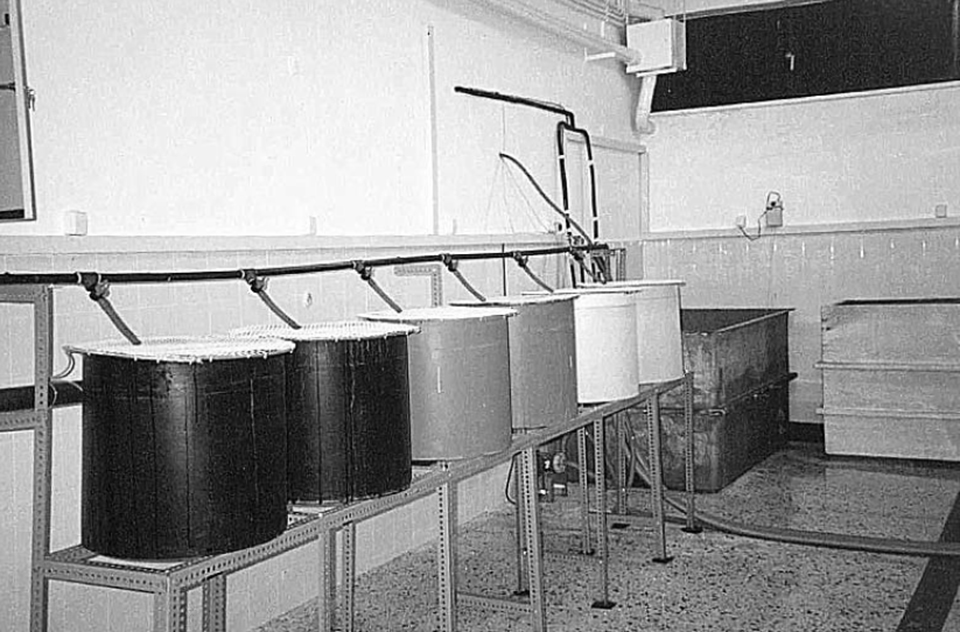
Research with carp
In the case of scaled common carp, the best results in terms of specific growth rate and food-conversion ratio have been obtained by specimens adapted to white color. Those adapted to green and black color yielded intermediate and worst results, respectively. Poor performance was associated with detected levels of cortisol.
The pale white color of carp reared in white-colored tanks is unusual. The acceptability of this end product should be tested in the market before proceeding to use white-colored tanks on a commercial scale.
Conclusion
Fish behavior can be affected by arbitrary design choices with a number of poorly understood consequences. Aquaculturists should strive to improve our knowledge of fish behavior, not only to improve the well-being of the fish, but because less stress on fish results in greater financial benefits.
It is worth reminding ourselves of Aristotle’s words almost 2,500 years ago: “Nothing that nature does is odd or in vain.” This means that any range of color modification that characterizes a specific fish species has been naturally determined, and it is up to us to learn how to distinguish natural colors from those caused by stress.
(Editor’s Note: This article was originally published in the February 2001 print edition of the Global Aquaculture Advocate.)
Now that you've reached the end of the article ...
… please consider supporting GSA’s mission to advance responsible seafood practices through education, advocacy and third-party assurances. The Advocate aims to document the evolution of responsible seafood practices and share the expansive knowledge of our vast network of contributors.
By becoming a Global Seafood Alliance member, you’re ensuring that all of the pre-competitive work we do through member benefits, resources and events can continue. Individual membership costs just $50 a year.
Not a GSA member? Join us.
Author
-
Sofronios E. Papoutsoglou, Ph.D.
Professor
Agricultural University of Athens
Faculty of Animal Production
Laboratory of Applied Hydrobiology
Athens, Greece[114,103,46,97,117,97,64,102,111,115]
Tagged With
Related Posts
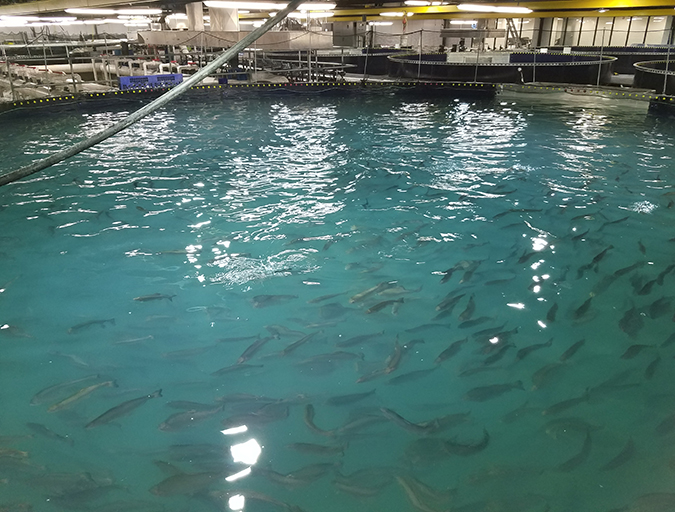
Intelligence
A land grab for salmon (and shrimp) in upstate New York
The operators of Hudson Valley Fish Farm see their inland locale as a pilot to prove that land-based fish farming, located in close proximity to major metropolitan markets, can be successful.
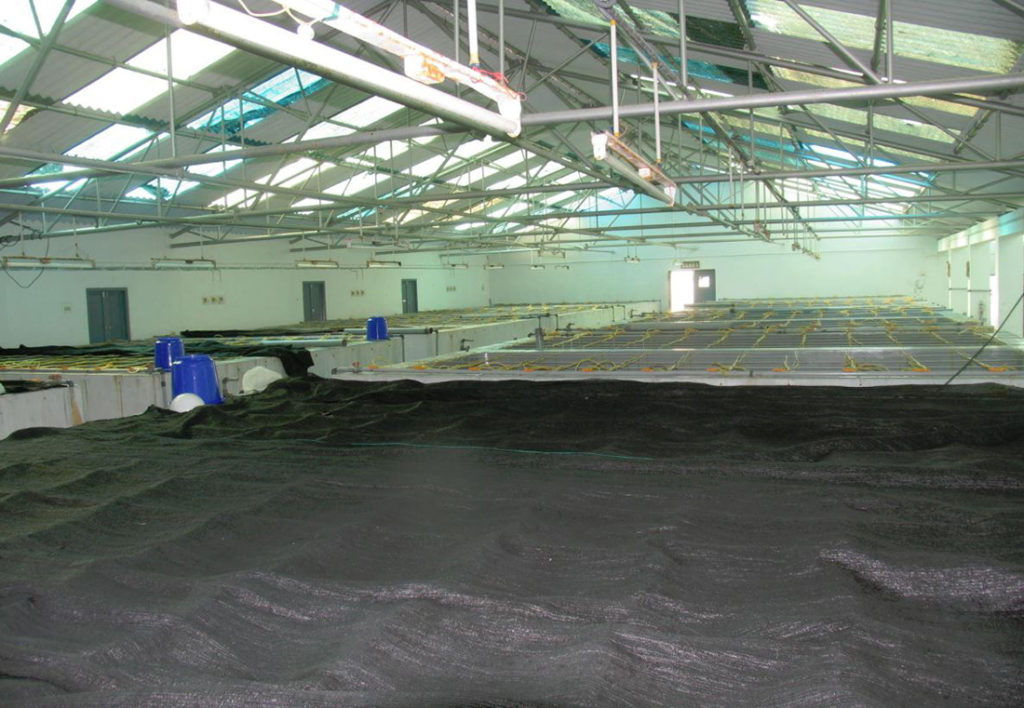
Health & Welfare
A study of Zoea-2 Syndrome in hatcheries in India, part 3
In this third and final part, authors present recommendations to help reduce the incidence of Zoea-2 Syndrome, which is not caused by any known infectious agents in P. vannamei hatcheries in India.
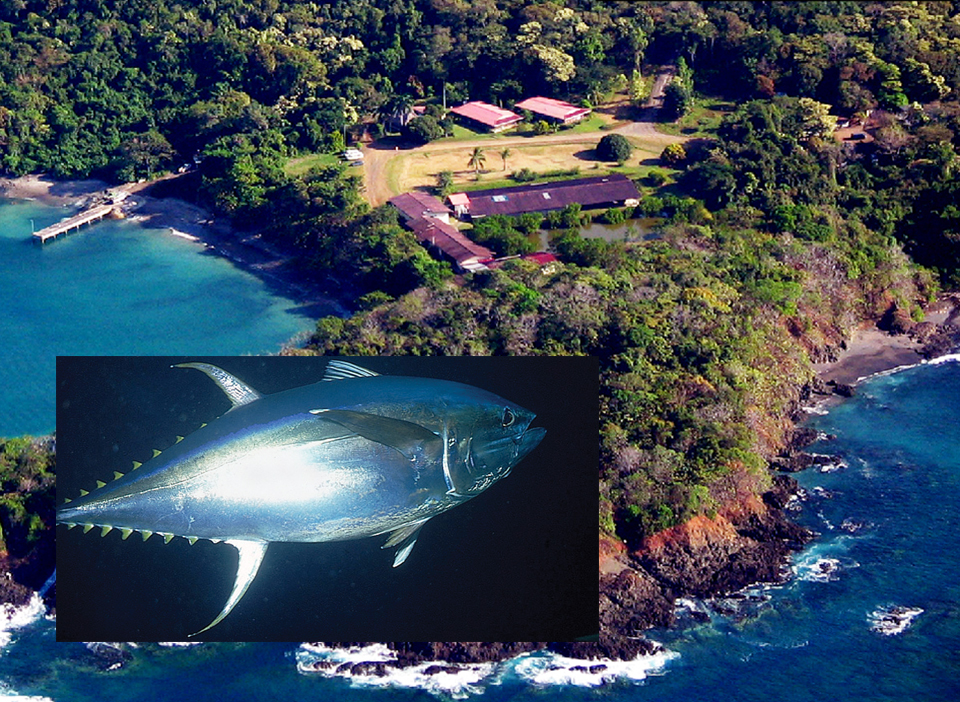
Health & Welfare
Achotines laboratory home to continuing studies of tuna early life history
The Inter-American Tropical Tuna Commission Achotines Laboratory in southern Panama is the world’s only facility with nearly year-round availability of tuna eggs and larvae. A study is comparing the reproductive biology, genetics and early life history of yellowfin and Pacific bluefin tuna.
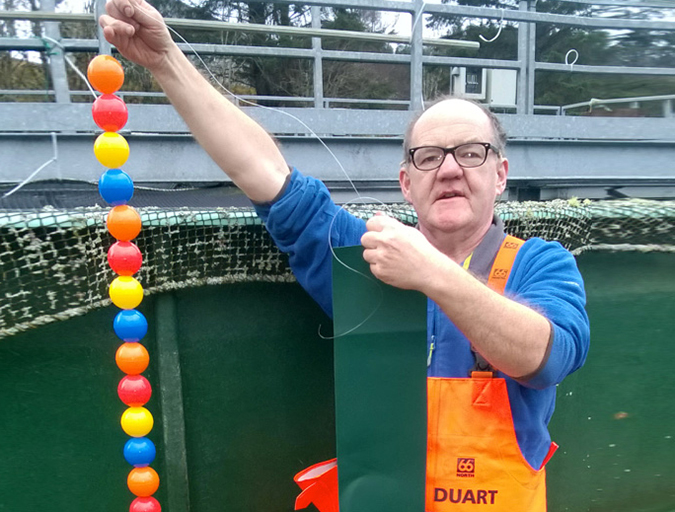
Health & Welfare
Time to play: Farmed fish respond to environment enrichment
Animal welfare on fish farms encompasses health, diet, water quality, husbandry, handling and slaughter. Add environment enrichment to the list, like a Scottish salmon company, which keeps its fish healthy by keeping them busy.



